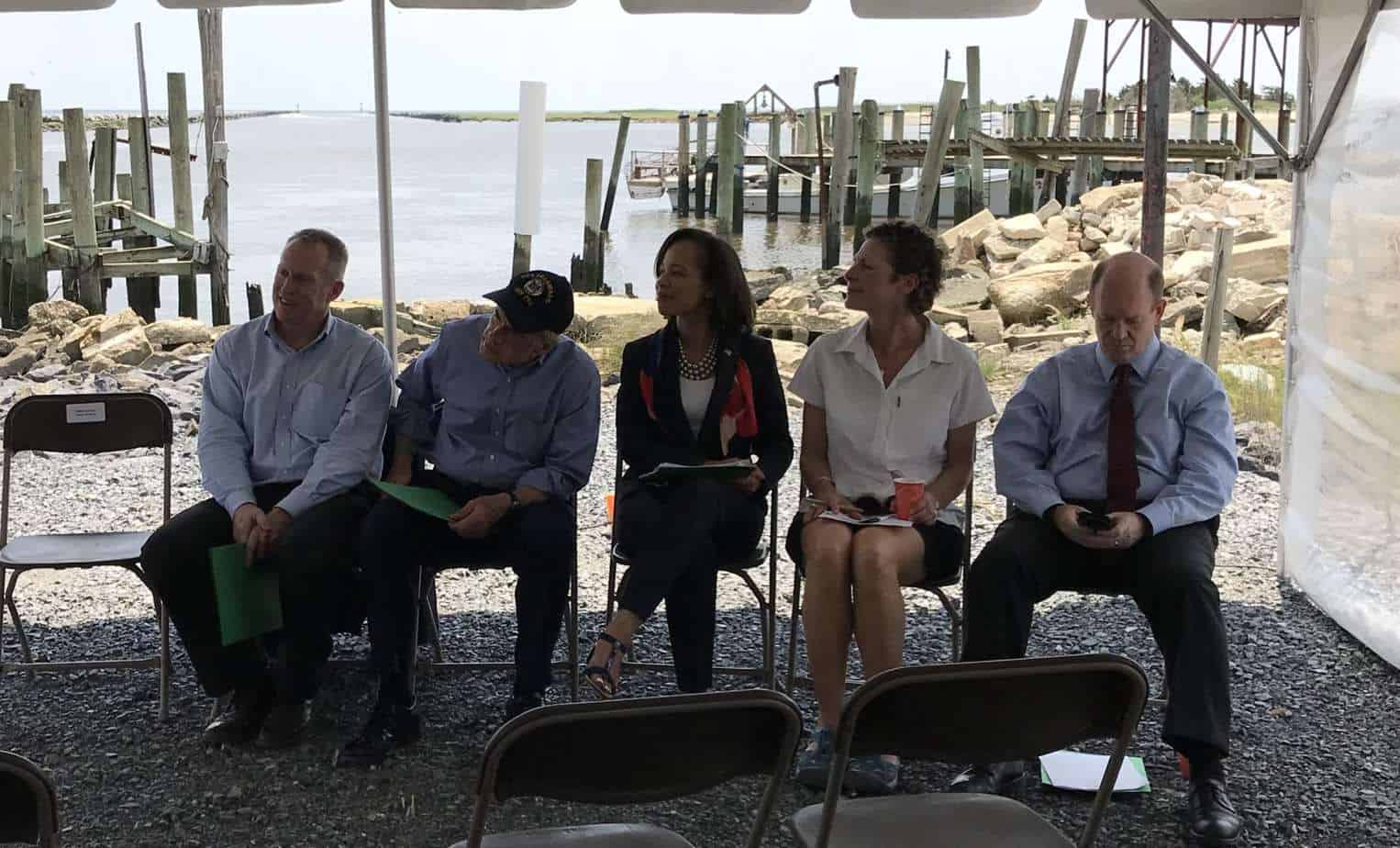All you can eat buffet is for the birds on Delaware’s bay shore

Delaware has rolled out the welcome mat for some interesting marine and avian tourists: the horseshoe crab and a celebrated bird, the red knot.
It's more than likely that neither of those nor the hordes of other shorebirds that flew and paddled (and yes, screamed) in the nearby waterways were aware of the notables gathered at Mispillion Harbor, near Milford, De., to celebrate the completion of restoration work at the junction of the Mispillion River and Cedar Creek.
The restoration created habitat for shorebirds and horseshoe crabs and shields the area from storms and waves by installing shoreline improvements and restoring 7.5 acres of sandy beach and dunes.

Superstorm Sandy did her worst here in 2012, and along with the impact from other storms, the previous beaches were devastated. With a combination of federal and state dollars, along with state and non-profit elbow grease and knowhow, the nearly $8 million spent will attract not just those wildlife visitors, but tourists from further afield to witness one of nature's fascinating shows: how the horseshoe crabs laying their eggs in the millions on the shores of the Delaware Bay provide the rich proteins that the migrating red knots need to replenish their stores for the last leg of their annual journey from South America to the Arctic.
"Tourism is a big part of our state's economy, " said U.S. Senator Tom Carper, noting that the state's policy of tax-free shopping is a big draw, but so is the state's wildlife, calling the birds and the crabs a "tourist magnet."

U.S. Senator Chris Coons praised the teamwork that the completed project represented: federal, state, NGOs and private individuals banding together to get the money needed and the work done. "If you want to go fast, go alone," he quoted. "If you want to go far, go together."
Though the restoration was appreciated by all sorts of critters, human and otherwise, Delaware Department of Natural Resources and Environmental Control Secretary Shawn M. Garvin pointed to a grander mission: to protect against the imminent storms to come as climate change starts to take a toll on his low-lying state.
"Delaware has the lowest mean elevation of all 50 states," he said. (Check here for more info)
In the coming years, as climate change takes its toll, resiliency will be a goal for many projects on Delaware's shores."This project will protect this harbor from coastal storms, but it benefits the (nearby) locals of Slaughter Beach," Garvin added.
Mispillion is just north of Prime Hook National Wildlife Refuge and south of Bombay Hook National Wildlife Refuge, so the harbor restoration here adds to a triple resiliency barrier to fierce storms that wreck havoc on the state's bay shore.
On the opposite New Jersey shore, it's easy to see how the water is slowly eating away at the shoreline in places like Gandys Beach and Fortescue, rendering homes and communities unfit for human habitation.
Interested? Here's a previous Delaware Currents story about exactly that.
"This is about creating a better world for our children," said U.S.Congresswoman Lisa Blunt Rochester, who talked about Moonbird -- the nickname for a noted male red knot who was first banded (as B95) in Argentina in 1995. He could have been to the moon if you totaled the number of miles he traveled in his annual journeys. His last known sighting was in 2007.
"This is awesome," said Wendi Webber, regional director of the U.S. Fish and Wildlife Service, as she gestured with wide arms -- and a big smile -- to include the harbor as well as the guests.
"This is what you get to do when you have terrific partners," she said echoing a theme reiterated at the presentation.

"This is a really special place, and a special project," said Eric Schwaab, vice president for conservation programs, National Fish and Wildlife Foundation.
"Thank you to Delaware, and thank you to everyone in D.C.," he said, "I've never encountered a delegation more conversant with these issues than you three."
And while the speechmaking continued, the stars of the show went about their flying, paddling and screaming business.
